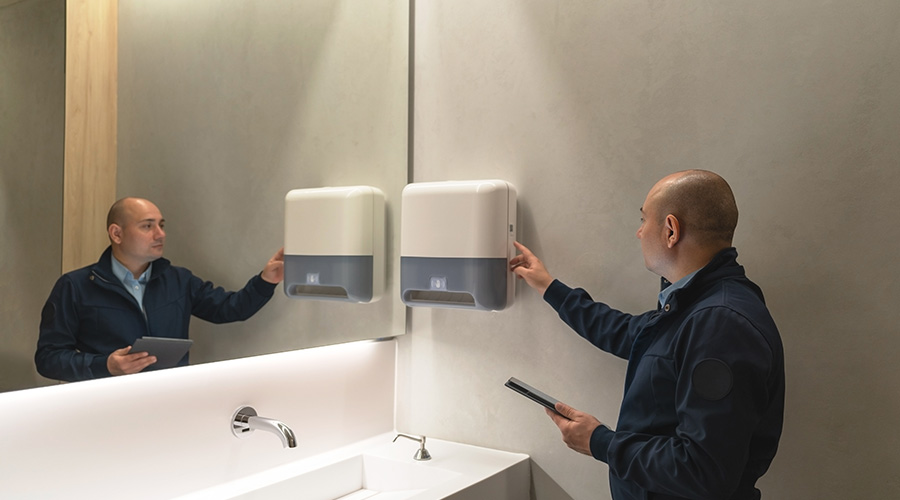Restroom Paper Products: Standard to Address Environmental Impact
While plumbing fixtures are a common target for maintenance and engineering managers working to make restrooms more environmentally responsible, they also are taking a closer look at the impact paper products have on sustainability.
Many managers specify recycled paper products to comply with a green-purchasing plan and to contribute to the organization's sustainability goals.
Third-party organizations, such as Green Seal, are developing standards for restroom paper products to assess environmental impact and performance. Green Seal issued two paper-product standards, GS-1 and GS-9, in the early 1990s, and the organization is combining the two standards into one proposed standard, GS-1 Sanitary Paper Products.
The revised standard would cover a range of sanitary paper products, including paper towels, paper napkins, bathroom tissue, facial tissue, and toilet-seat covers, in institutional and retail markets. The standard would not include products such as non-woven sanitary products, general-purpose wipes, flushable wipes, disposable diapers, or sanitary napkins and tampons.
While researching for this revision, Green Seal identified life-cycle components that factor heavily into the production of environmentally responsible sanitary paper products. These components include: fiber source; the use of chlorine and other hazardous materials during production; water and energy use during production; air and water-quality emissions from production; transportation-related emissions; waste; packaging; and social responsibility.
The proposed standard would test products for a handful of characteristics, including basis weight, wet and dry tensile strength, stretch, water absorbency, and brightness, according to a Green Seal document outlining the proposed standard. Manufacturers would have to demonstrate they are packaging and shipping the product in the most environmentally responsible way. They also would have to meet material specifications related to the number of sheets in each roll, box, or package, or an equivalent square footage.
Products that meet the revised standard would have to be made of 100 percent recovered material. Recovered fiber manufacturing processes require less energy and water and limit emissions and wastewater, compared to virgin fiber manufacturing processes, according to a study by the Environmental Defense Fund.
To meet the proposed standard, manufacturers would have to process the products without chlorine. The use of chlorine and chlorine-containing compounds during papermaking can produce dioxins, furans, and other chlorinated organics that typically pass through a wastewater-treatment plant. The revised standard also would prohibit the paper products or packaging from containing fragrances or added colorants, such as pigment, ink, and dye.
Green Seal received public comments on the proposed standard earlier this year and is reviewing and researching those comments. To track the release of the standard or to learn more about the revision, visit www.greenseal.org/certification/documents.cfm and click on GS-1 Sanitary Paper Products Revision.
Related Topics:

















